Sewer plastic pipes: diameters, prices
Every owner wants everything to work in his household, nothing breaks, it is easy to maintain and install. And sewage is no exception. It is necessary that it requires as little attention as possible - it is very inconvenient if it clogs up, but it is no less unpleasant to clean it. If you want a trouble-free drainage system, pay attention to plastic pipes for sewage. They are gradually replacing cast iron, and all because they cost less, are easier to assemble, have a large assortment - different diameters and lengths, almost no deposits form on their smooth walls, and even the service life is about 50 years. All this bouquet of properties determines their popularity.
The content of the article
Types of plastic sewer pipes
Products made from different types of polymers are sold under the general name "plastic":
- polyethylene (PE):
- high pressure (HPP) - for internal sewerage wiring;
- low pressure (HDPE) - it is possible to lay outside, in trenches (have great strength);
- polyvinyl chloride (PVC);
- polypropylene (PP)
And a whole range of other thermoplastics and their combinations, but they are rare - people prefer to use already known materials.
The material of the plastic sewer pipes is selected depending on the area of application. For example, polypropylene is more suitable for laying sewage inside a house or in an apartment. It has a higher operating temperature range - it normally tolerates media up to 70 ° C, for a short time - up to 95 ° C. In the presence of various household appliances that drain hot waste water into the sewer, this will not be superfluous. PVC pipes, which have lower prices, are more appropriate when laying an external sewage system - there are usually already mixed drains, so the temperatures are lower and PVC can take them out without harm (operating up to + 40 ° C, short-term increase to 60 ° C).
Also, sewer pipes are smooth and corrugated. Moreover, not only the branches from the siphons can be corrugated. There are profiled pipes for sewerage with a smooth inner wall and an outer ribbed one. They have greater strength - they better tolerate compressive loads (they have increased ring stiffness), they can be buried to a great depth. Available in diameters from 110 mm to 1200 mm.
Dimensions and diameters
Sewer plastic pipes, unlike water and gas pipes, are produced in the form of segments, 50 cm long, 100 cm, 200 cm, etc. - up to 600 cm. The maximum length is 12 meters, but some manufacturers can make longer sections on request. When laying long routes, this is convenient - fewer connections, fewer possible places for problems (leaks or blockages).
Another important characteristics of plastic pipes are diameter and wall thickness. In the marking, they usually go side by side: there are numbers 160 * 4.2. What stands for: the outer diameter of the pipe is 160 mm, the wall thickness is 4.2 mm. It is worth remembering here that manufacturers indicate the outer diameter of plastic pipes, and many calculations and planning require knowing the inner diameter. It is easy to calculate: from the outside we subtract twice the wall thickness: 160 mm - 4.2 mm * 2 = 151.6 mm. In calculations and tables, a rounded result usually appears - in this case - 150 mm.
In general, the industry produces plastic pipes for sewage with a diameter of 25 mm. The maximum cross-section depends on the type of pipe (smooth or corrugated) and the material from which it is made.For example, smooth PVC sewer pipes can be up to 630 mm in diameter, and profiled two-layer pipes - up to 1200 mm. But these dimensions are useless for homeowners or apartment dwellers. In private housing construction, diameters up to 100-110 mm are mainly used, rarely up to 160 mm. Sometimes, for a large cottage with a large number of plumbing fixtures, a pipe 200-250 mm in diameter may be needed.
The organization of the sewage system in the country is described here.
How to choose a diameter for connecting plumbing fixtures
According to the rules, it is necessary to make a calculation, it is fully spelled out in SNiP 2.04.01085. This is a complex matter, a lot of data is required, so very few people really think it right. Over the years, the experience gained has made it possible to derive the average diameters of polyethylene sewer pipes for each of the plumbing fixtures. You can safely use these developments - all calculations usually come down to these dimensions.
| Name of the plumbing fixture | Diameter of plastic sewer pipe | Bias | Distance between central drain and siphon |
|---|---|---|---|
| Bath | 40 mm | 1:30 | 100-130 cm |
| Shower | 40 mm | 1:48 | 150-170 cm |
| Toilet | 100 mm | 1:20 | up to 600 cm |
| Sink | 40 mm | 1:12 | from 0 to 80 cm |
| Bidet | 30-40 mm | 1:20 | 70-100 cm |
| Kitchen sink | 30-40 mm | 1:36 | 130-150 cm |
| Combined drain - bath, sink, shower | 50 mm | 1:48 | 170-230 cm |
| Central riser | 100-110 mm | ||
| Outlets from the central riser | 65-75 cm |
As you can see, plastic pipes for sewage with a diameter of 30-40 mm are mainly used. Only for the toilet a much larger size is needed - 100-110 mm. This is due to the peculiarity of functioning - it is necessary to drain a large amount of water in a short period of time. At the same time, there must be room for air in the pipe, otherwise it will rip off the water locks on other plumbing and the "aromas" from the sewer will enter the room.
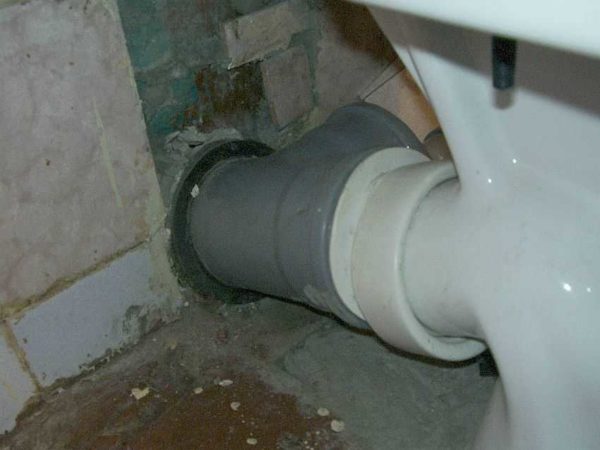
Example toilet connection
When making a device, you need to remember a few more rules:
- The system should not be rotated 90 °. If there is such a need, the turn is made up of two corners of 45 °. Sharp turns are problem areas in which blockages are often formed, and also through such corners the cable does not pass well for cleaning the sewer.
- To prevent the drains from stagnating in the pipes, they are laid at a slope (see the table for the slope value).
- Near the branch, a fitting with a cleaning hole is installed, which is closed by a sealed cover (revision). In these places, blockages are most often formed, so such a measure is clearly not superfluous - you do not have to "get" a plug through the nearest plumbing fixture. By the way, if there is some device nearby that is easy to disconnect from the sewer, you can not install an audit.
- When moving towards the riser, the diameter of the plastic sewer pipes remains constant or increases. There should be no reduction. All narrowing points are clogged very quickly.
- In a combined bathroom the arrangement of plumbing is planned so that the toilet is closest to the riser. Otherwise, the odors will be more than unpleasant - solid fragments will remain on the branches.
We must also not forget about the insulation or heating of the sewer outlet in a private house. The vertical section that goes from the outlet to the entrance to the trench must be well insulated. Additionally, they often use heating cables for pipes... In the case of sewers, they are usually laid outside, then covered with heat-insulating material.
That’s all. The rules are simple, but if you follow them, everything will work for a long time and trouble-free.
Features of the installation of plastic sewer pipes
Plastic pipes for sewage on one side end with a socket, into which a sealing rubber is inserted. The segments are connected simply: an even edge is inserted into the socket. Since the dimensions are strictly standardized, this, in principle, is sufficient for a tight connection.In practice, the O-ring is often additionally coated with a silicone plumbing sealant.
When installing sewer plastic pipes, at times they have to be cut. It is convenient to do it with a hand saw with a metal blade - small teeth cut well and leave an almost even edge. You can also use a grinder or an electric jigsaw. In any case, before installing the trimmed piece, its edge must be processed with fine-grain sandpaper - remove any burrs, make it even. A piece of waste can catch on the protruding pieces, As a result, a blockage may form in this place. Therefore, we carefully smooth out the saw cut.
When creating a sewer network in a house or apartment, it is often necessary to make a branch. There are fittings for this - adapters from one diameter to another, tees, corners with different degrees of rotation, etc.

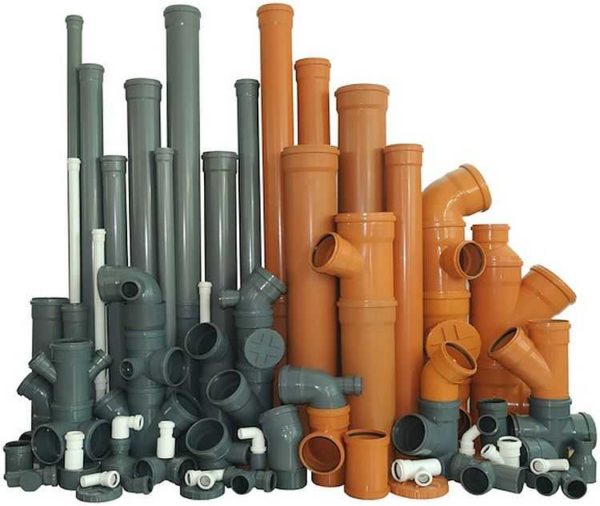
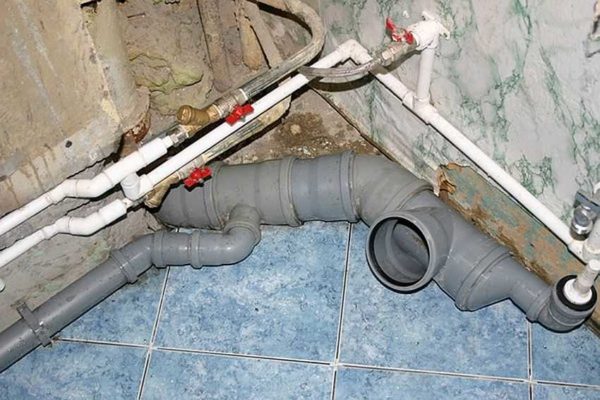
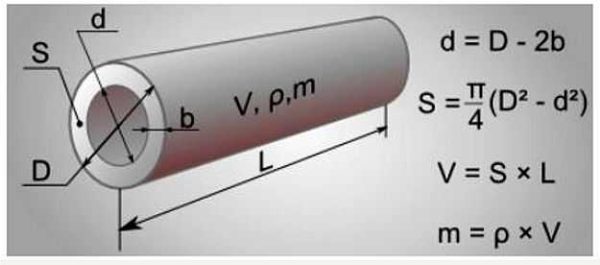
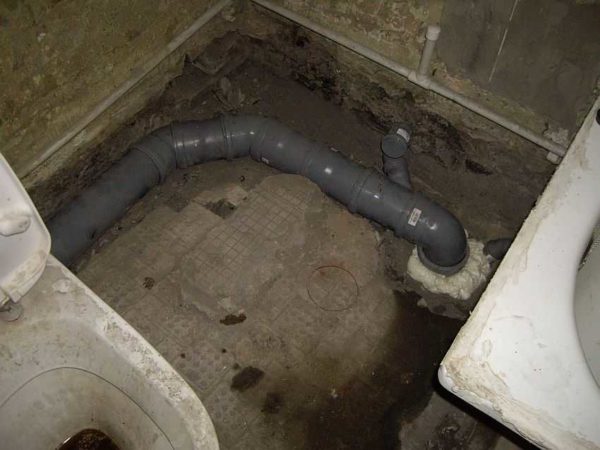
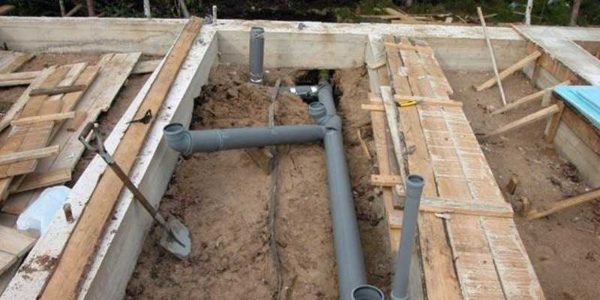
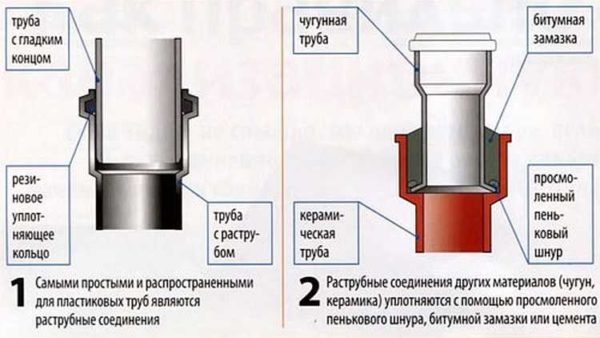
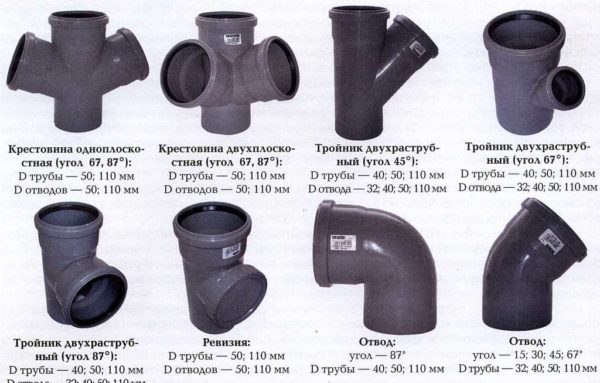
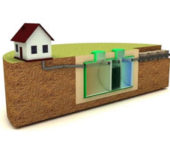
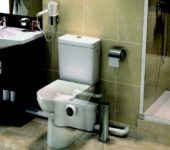
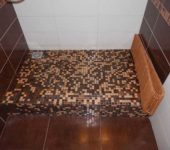
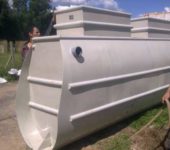
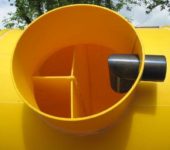





Interested in a sewer pipe with sockets DN 600 mm. - 277 lm and DN 400 - 49 lm. When confirming, I ask you to inform the date of shipment, the cost, taking into account the delivery of Karaganda, MTS department of VitaKhim-Kazakhstan LLP 87015213448
Unfortunately, the site is informational - we do not trade in anything.